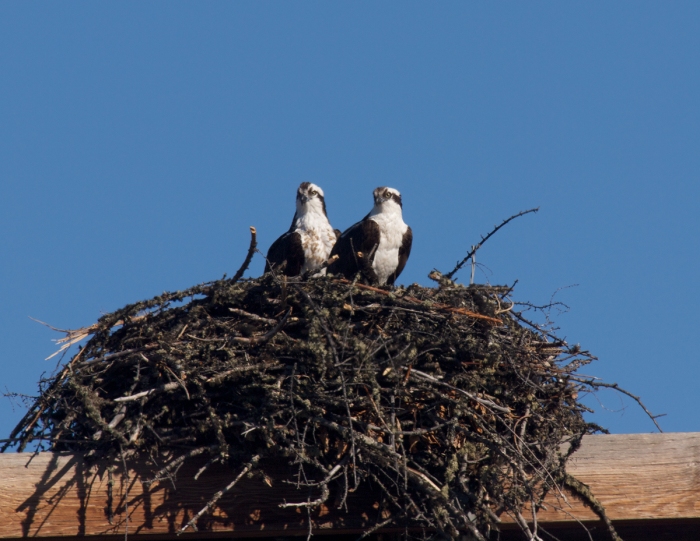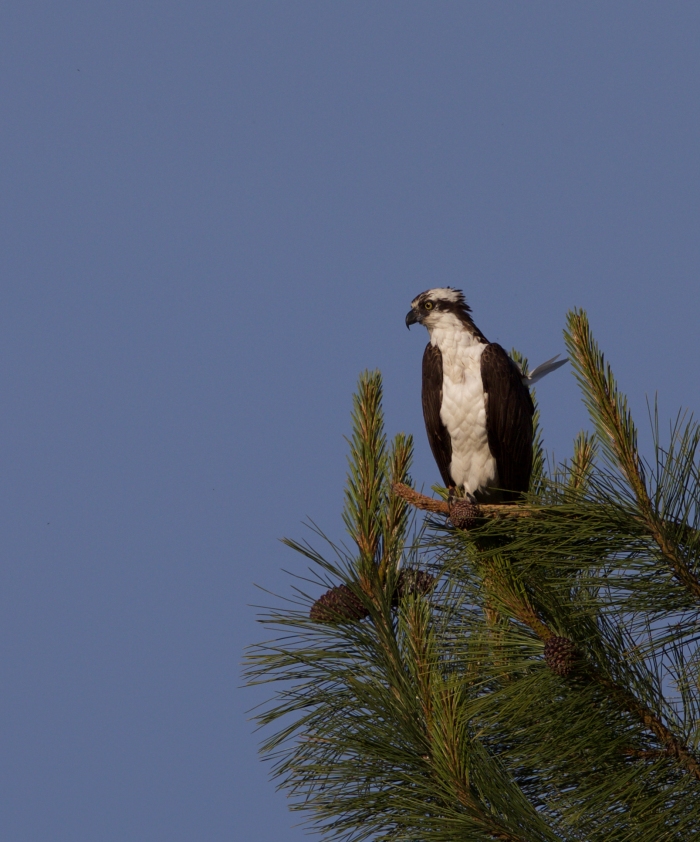The Return of Bird of the Week — Osprey
For about three years (187 weeks, in fact) WC featured a Bird of the Week post on Saturdays that was cross-posted here at The Mudflats. The idea was to share bird photos with readers, maybe provide a little mostly accurate information about birds, and perhaps sell some bird photos and help pay for WC’s expensive avian photography habit.
The series stopped when WC ran out of Alaska bird photos that were decent enough to share. That was about a year ago.
After a massive, sometimes tedious review of a chunk of WC’s library of bird photos, WC is feeling inspired. Bird of the Week will resume, this time with bird photos from pretty much any place in the Western Hemisphere. A few of the photos may have appeared earlier in one blog post or another, but mostly the photos should be new to readers.
We’ll start with Osprey, formerly known as a “Fish Hawk,” photographed here on a nest a few miles outside of Boise.

Osprey Adults with four juveniles, f5.6, 1/640, ISO250, 500mm lens with 1.4 teleconverter
WC has chosen these Osprey as the first post in the new Bird of the Week because this was a species Mrs. WC studied extensively in graduate school. Osprey are among the most widely distributed birds in North America, and are reasonably comfortable around developed areas. They are North America’s only plunge-diving raptor. Because Osprey dive feet first, they can only seize fish in the top meter or so of the water.
Osprey are also a conservation success story.

Osprey on Nest, 12 Mile Village, Alaska. f9, 1/640, ISO200; 300mm lens with 2.0 teleconverter.
Pesticides brought many populations of Osprey to the brink of extinction; as a top-tier predator, they are susceptible to biomagnification. Fish that ate bugs sprayed with DDT magnified the pesticide in their tissue. Fishing eating birds concentrated it further. But today Osprey populations are stable and there are much lower levels of DDT/DDE in the environment.
Any time someone tries to tell you that the Endangered Species Act is a failure? Ask them about the Osprey.
For more bird photos, visit Frozen Feather Images.

Osprey in Late Afternoon Light, Payette River, Idaho. f9, 1/640, ISO200; 500mm with 1.4 teleconverter.
Welcome back, WC! So glad to have Bird of the Week back!
Wow! Great shots. I love WC’s your bird photos.